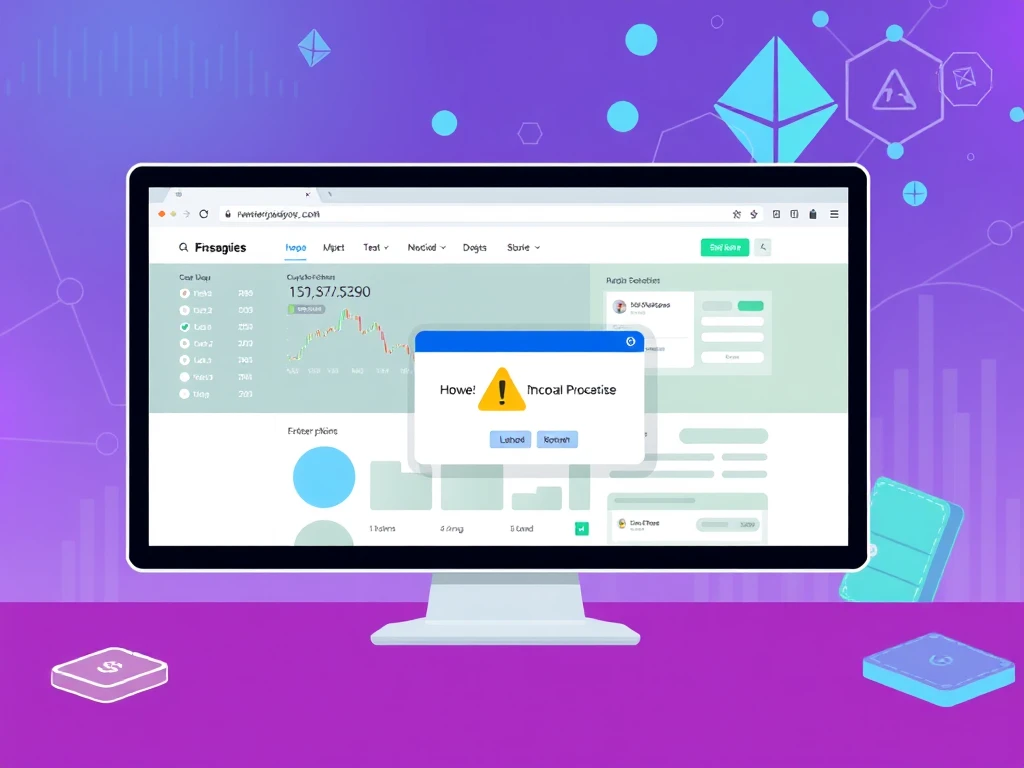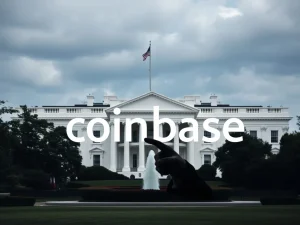Alert: CoinMarketCap Removes Malicious Wallet Scam Prompt

Were you recently browsing CoinMarketCap, the popular crypto price-tracking website? If so, you might have encountered a suspicious popup urging you to verify your crypto wallet. This incident, identified as a malicious scam attempt, highlights ongoing challenges in maintaining robust crypto security within the digital asset space.
What Happened with the CoinMarketCap Crypto Scam?
Reports surfaced on social media platforms like X (formerly Twitter) about a deceptive popup appearing on the CoinMarketCap website. This notification prompted users to “Verify Wallet,” a classic tactic used in phishing attacks.
According to CoinMarketCap’s official X account, the team acted swiftly once the issue was brought to their attention:
- They acknowledged awareness of the malicious popup.
- They confirmed they had identified the source of the malicious code.
- The code has been removed from the site.
The platform stressed the importance of user safety during the incident, warning users NOT to connect their wallets if they saw the popup.
Investigating the Phishing Attempt
While the immediate threat of the popup has been addressed, the investigation into how the malicious code ended up on the site is still active. CoinMarketCap stated, “Our team is continuing to investigate and taking steps to strengthen our security.”
This type of attack is a form of crypto scam designed to trick users into compromising their private keys or granting malicious approvals to their wallets, potentially leading to asset theft. Cybercriminals often leverage trusted platforms or create fake ones to distribute these harmful links or prompts.
How Wallet Providers Reacted to the Wallet Verification Scam
Several popular cryptocurrency wallet providers were quick to flag the issue, adding an extra layer of protection for their users. Reports indicated that browser extensions for wallets like MetaMask and Phantom began displaying warnings when users navigated to CoinMarketCap.
For instance, Phantom wallet users saw a clear notification indicating the website was “unsafe to use” while the malicious code was present. This collaboration between platforms and wallet providers is crucial in mitigating the impact of such security threats.
Protecting Yourself from Crypto Security Threats
Incidents like the one on CoinMarketCap serve as a stark reminder of the persistent risks in the crypto world. Here are actionable steps you can take to protect your assets:
| Action | Description |
|---|---|
| Be Skeptical of Popups | Never trust unexpected popups asking for wallet connection or private information on any website, even trusted ones. |
| Verify URLs | Always double-check the website URL to ensure you are on the legitimate site. Phishing sites often use similar-looking addresses. |
| Use Wallet Warnings | Pay attention to security warnings from your wallet software or browser extensions. |
| Educate Yourself | Understand common scam tactics like phishing, dusting attacks, and fake airdrops. |
| Use Hardware Wallets | For significant holdings, consider using a hardware wallet for enhanced security. |
Remember, legitimate platforms rarely ask you to verify your wallet via a sudden popup while you are browsing.
Conclusion: Staying Vigilant in the Face of Crypto Scam Attempts
The swift response by CoinMarketCap to identify and remove the malicious code is a positive sign, demonstrating their commitment to user safety. However, the incident underscores that the digital landscape is constantly targeted by malicious actors attempting wallet verification scams and other forms of fraud.
Staying informed about potential threats, using security tools provided by your wallet and exchanges, and maintaining a healthy dose of skepticism towards unsolicited requests are your best defenses in navigating the complexities of the crypto space securely. Always prioritize your personal crypto security.








